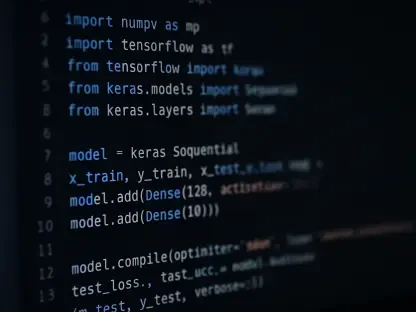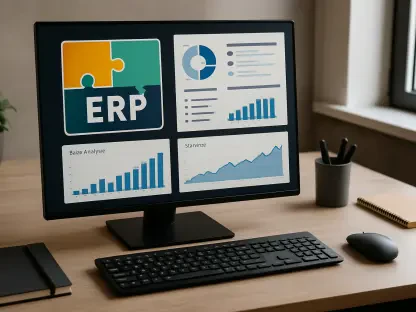Technical debt has emerged as a formidable challenge for organizations across industries, with legacy systems silently draining resources and stifling innovation at an alarming rate. Recent estimates peg the annual cost of technical debt to U.S. companies at a staggering $2.41 trillion, a figure that underscores the urgency of finding effective solutions. As businesses grapple with outdated technology that hampers agility, the question looms: can low-code modernization offer a rapid, sustainable way to eliminate this burden? This report delves into the complexities of technical debt in today’s digital landscape, examines the rise of low-code platforms as a potential remedy, and explores whether such tools can truly address long-standing issues overnight.
Understanding Technical Debt in the Modern Digital Landscape
Technical debt represents the hidden cost of maintaining legacy systems that, while functional on the surface, burden organizations with inefficiencies and risks. Many companies rely on technology built decades ago, creating a backlog of issues that consume significant portions of IT budgets. This debt not only affects financial resources but also undermines operational stability, as outdated systems struggle to meet modern demands for speed and scalability.
The scale of the problem is immense, with studies indicating that technical debt accounts for roughly 15% of IT spending in many enterprises. Beyond budgetary strain, it limits innovation capacity, preventing businesses from adopting new technologies or responding to market shifts. The ripple effects are felt in delayed product launches and missed opportunities, positioning technical debt as a strategic liability rather than a mere technical concern.
Key contributors to this issue include outdated technology stacks, operational fragility from frequent system failures, and heightened security vulnerabilities due to unsupported software. As cyber threats evolve, legacy systems become easy targets, amplifying the risks. Addressing these root causes is critical, as the cost of inaction—both in financial terms and competitive disadvantage—continues to escalate.
The Rise of Low-Code Modernization as a Solution
Key Trends Driving Low-Code Adoption
As organizations recognize technical debt as a barrier to business agility, there is a noticeable shift toward tools that simplify and accelerate development. Low-code platforms, with their visual interfaces and drag-and-drop functionality, have gained traction for their ability to streamline modernization efforts. These tools empower teams to update systems without the complexity of traditional coding, reducing the learning curve and speeding up deployment.
Another driving force is the demand for faster development cycles amid rising customer expectations. Low-code solutions facilitate incremental updates, allowing businesses to adapt to changing security standards and market needs without major disruptions. This adaptability is crucial in an era where downtime can erode customer trust and revenue.
Market pressures, such as the need to minimize operational interruptions, further fuel adoption. Companies are increasingly prioritizing solutions that enable background modernization, ensuring continuity while addressing legacy challenges. This trend reflects a broader movement toward agile methodologies that align technology with business goals.
Market Insights and Growth Projections
Adoption of low-code platforms is on a steep upward trajectory, with many industries integrating these tools into their IT strategies. Recent data suggests that a significant percentage of enterprises have already implemented low-code solutions to tackle modernization, with positive impacts on reducing technical debt. The ability to iterate quickly has proven especially valuable in sectors with rapid innovation cycles.
Industry reports highlight the financial burden of technical debt, noting that it consumes a substantial share of IT budgets. Projections indicate that the low-code market will continue to expand significantly from 2025 to 2027, driven by demand for efficient, cost-effective modernization. This growth signals a shift in how companies approach legacy system challenges, prioritizing scalability and speed.
Looking ahead, low-code is poised to reshape IT strategies by embedding flexibility into modernization efforts. As more organizations adopt these platforms, the focus will likely move toward integrating them with emerging technologies to further enhance outcomes. This forward-looking approach suggests a future where technical debt becomes less of an obstacle and more of a manageable aspect of digital transformation.
Challenges of Traditional Modernization Approaches
Traditional methods of addressing technical debt, such as full system rewrites using hard-coded techniques, often fall short of expectations. These approaches typically involve lengthy timelines, requiring extensive planning and execution phases that can span years. During this period, businesses face heightened risks of operational delays and unexpected complications.
A major drawback is the introduction of new dependencies during overhauls, which can inadvertently increase technical debt rather than reduce it. Significant downtime is another concern, as system replacements disrupt customer-facing operations and internal workflows. Such interruptions can damage reputation and bottom lines, making traditional methods less viable in competitive markets.
To mitigate these risks, some organizations explore phased transitions or hybrid strategies, though these too carry challenges of coordination and cost. The persistent shortcomings of conventional approaches highlight the need for alternatives that prioritize minimal disruption. This gap sets the stage for low-code solutions to emerge as a more practical and efficient path forward.
Navigating the Regulatory and Security Landscape with Low-Code
Modernizing legacy systems often involves navigating a complex web of regulatory requirements, particularly in industries with strict compliance mandates. Evolving security standards demand that systems remain up-to-date to protect sensitive data and maintain trust. Failure to meet these obligations can result in penalties and reputational harm, adding pressure to modernization initiatives.
Low-code platforms offer a way to address these challenges by enabling continuous updates that align with regulatory changes. Their modular design allows for targeted adjustments without overhauling entire systems, ensuring compliance without sacrificing efficiency. This capability is especially valuable in dynamic environments where rules and expectations shift frequently.
Moreover, low-code tools enhance cybersecurity by facilitating the patching of vulnerabilities in outdated systems. By integrating modern security protocols into existing frameworks, organizations can reduce exposure to threats. The adaptability of low-code solutions underscores their role in helping businesses balance innovation with the demands of a stringent regulatory landscape.
The Future of Tech Debt Management with Low-Code
Looking to the horizon, low-code modernization holds transformative potential for how companies manage technical debt over the long term. By shifting the paradigm from reactive fixes to proactive updates, these platforms enable a sustainable approach to IT infrastructure. This shift could redefine technical debt as an opportunity for growth rather than a persistent burden.
Emerging trends point to deeper integration of low-code with technologies like artificial intelligence and cloud computing. Such synergies promise to amplify the efficiency of modernization efforts, allowing for smarter, data-driven updates. As these integrations mature, businesses may find new ways to leverage their tech stacks for competitive advantage.
Global economic conditions and the pace of innovation will also shape low-code adoption. In an environment of rapid change, continuous modernization positions companies to respond swiftly to consumer demands and market disruptions. Embracing low-code as a core strategy could thus become a defining factor in maintaining relevance and resilience in the digital age.
A Strategic Path Forward with Low-Code
Reflecting on the insights gathered, it becomes clear that technical debt poses a pervasive threat to organizational success, with legacy systems draining resources and curbing innovation. The exploration of low-code modernization reveals a compelling alternative to traditional approaches, offering efficiency and minimal disruption. This analysis underscores the urgency of addressing tech debt as a strategic priority.
Moving forward, organizations are encouraged to integrate low-code platforms into their long-term IT plans, focusing on incremental progress over sweeping overhauls. A key takeaway is the importance of partnering with vendors who prioritize security and compliance in their offerings. This step ensures that modernization efforts align with regulatory demands.
Additionally, investing in training for teams to leverage low-code tools effectively emerges as a critical next step. By fostering a culture of continuous improvement, companies can position themselves to not only manage technical debt but also drive innovation. These actionable measures point to a future where tech debt ceases to be an insurmountable challenge and instead becomes a catalyst for transformation.









